How to carry a water bottle while hiking
We look at how to carry a water bottle while hiking to make sure you stay hydrated on the trail
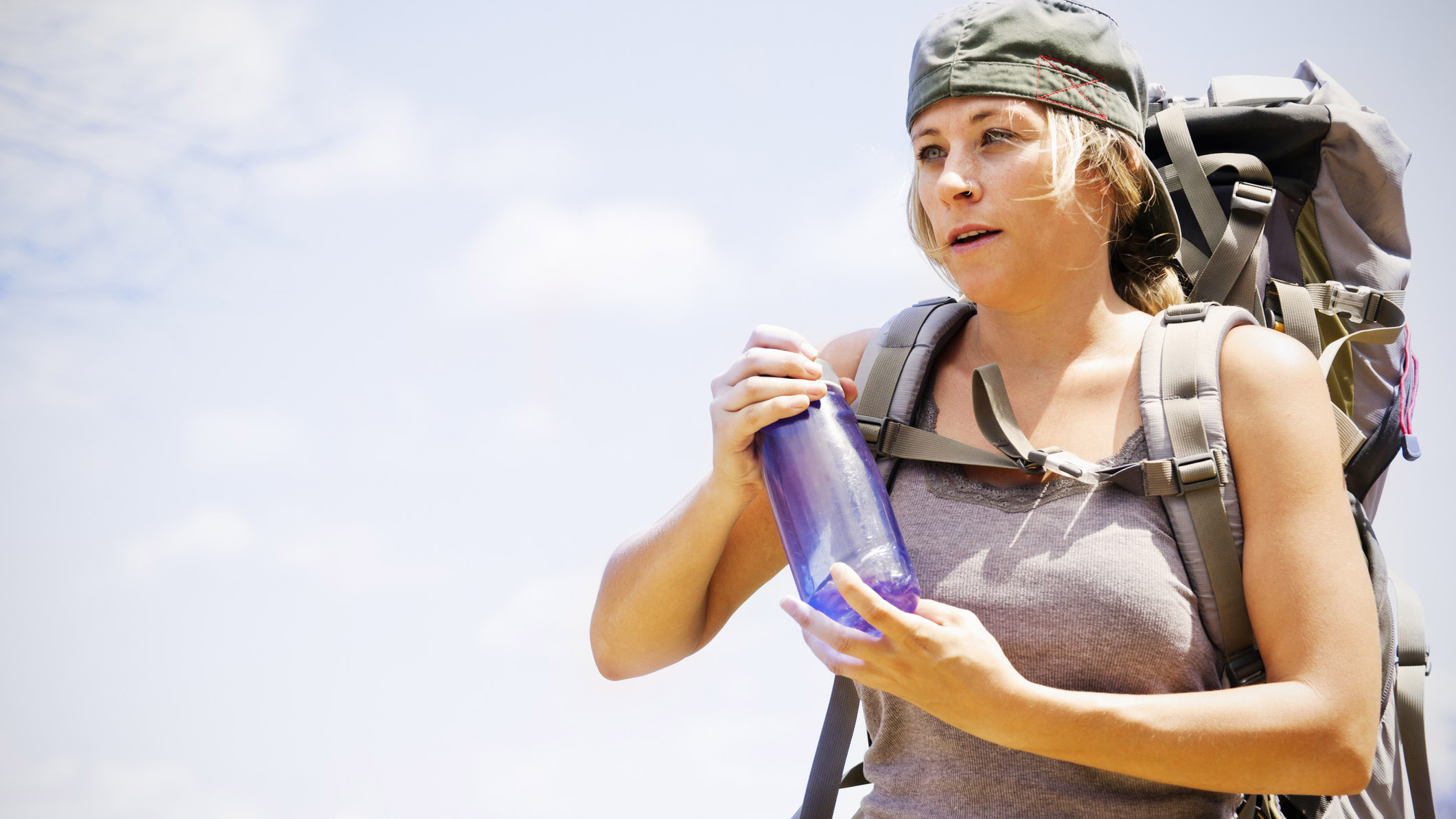
You know that hydration is key when it comes to hiking, no matter what the season or weather, so you’ve gone ahead and researched how much water you need to be carrying and you’ve chosen a water bottle that suits your needs – but what is the best way to carry it? After all, you may not want to have to stop every time you want to take a sip, so keeping it close to hand is ideal, but even if the lid has a big handle like on the Hydro Flask 32oz, you really want to keep your hands free for using your trekking poles and avoiding falls. There are a few different ways to tote your water on the trail, so we take a look at how to carry a water bottle while hiking to help you find the best option for your hiking style.
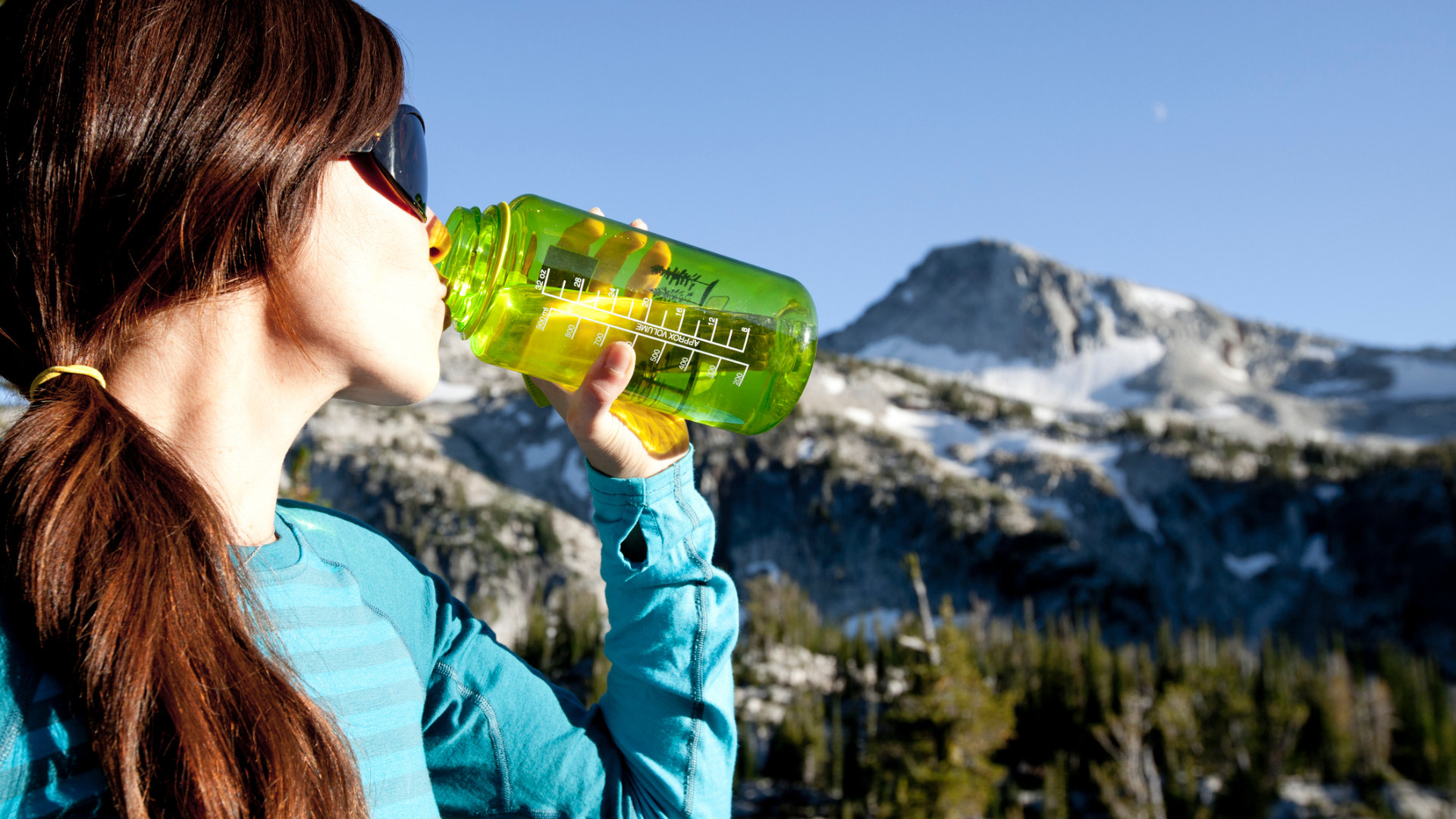
1. Backpack
Your hiking backpack is the most obvious place to carry your water bottle, but even that carries several possibilities. Of course, you can just place it in the main compartment of your backpack, which definitely makes sense if you’ve gone for a big, heavy jug like the Yeti Rambler 26oz. However, you’ll want to pack it towards the bottom and middle of your backpack to keep it balanced and even, surrounded by softer items like your waterproof jacket. This makes sure it’s not uncomfortable against your back, though a soft water bottle helps with this. This option also means that your water is going to be harder to reach when you're thirsty.
You could use the mesh pocket at the back of your backpack if it has one, which does mean the weight is a little further back than you might want, but it will be centered and at least you can grab your water bottle without unzipping your pack and rummaging around.
There are another two other options here. One is to use the mesh panels on the sides of your backpack. These may be deep enough to hold your water bottle and usually have compression straps just above them which help secure your bottle. Though it’s not always the easiest or most comfortable movement, you may be able to reach back and grab your water bottle out without stopping. Of course, if your bottle is large and heavy, this will feel uneven so you’ll want something of a similar weight (like a second bottle) in the other pocket.
Then there’s the option of buying a backpack that has water bottle pouches in the shoulder straps. These are by far the most accessible, and there’s no fear of the bottles swinging around as you move, though you may need to buy water bottles to fit, and again, you might prefer to balance out the weight with a second bottle.
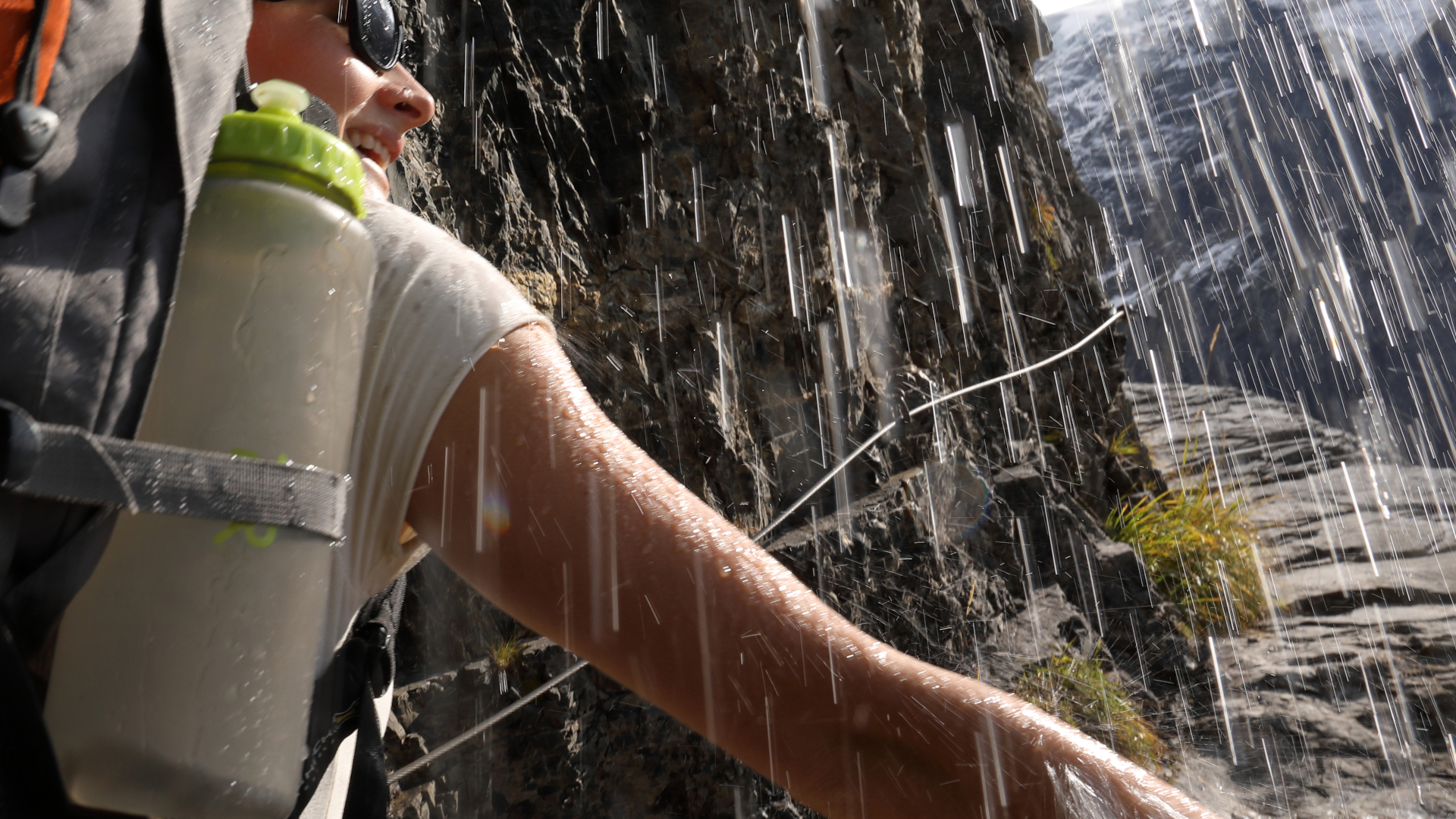
2. Water bottle sling
If you have no intention of buying a new backpack, thank you very much, and the above options don’t sound too appealing, then you could consider a water bottle sling. This looks a lot like the sling that people use to carry binoculars, and allows you to carry your water around your neck, keeping it close by and your hands free. You’ll either wear it across your body, which is a little asymmetrical but keeps it from swinging around, or like a long necklace, where it will feel balanced but may swing more. The downside to this option is that the strap may rub or hurt your neck.
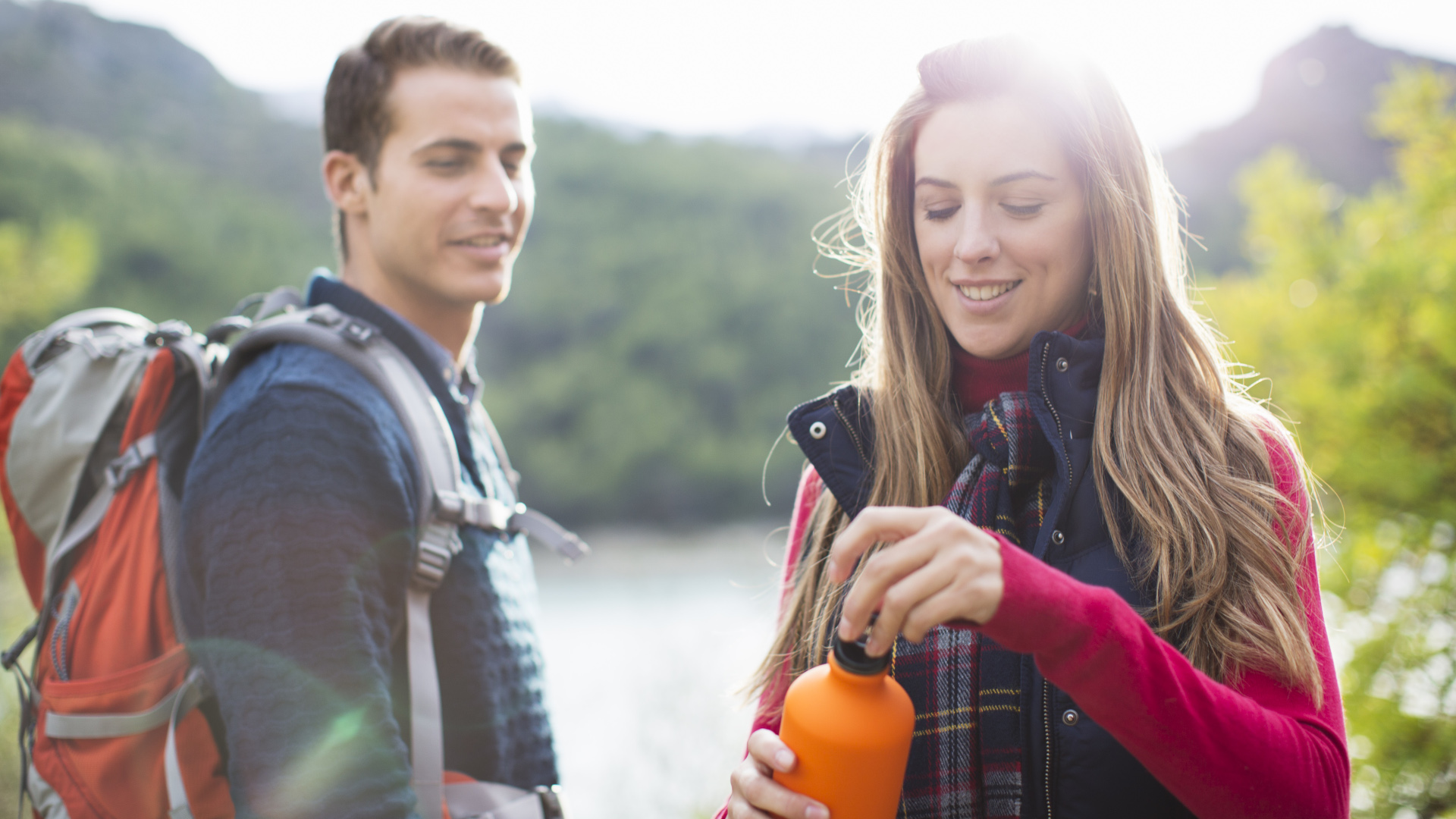
3. Hydration belt
Essentially a fanny pack that holds water bottles, hydration belts are a bit of an acquired taste. Hydration belts keep your water close to hand and don’t involve anything hanging around your neck, which a lot of hikers see as a big plus. However, some hikers find that these belts bounce around and, depending on the belt, you might need to purchase some smaller water bottles to fit in the pockets. These aren’t really compatible with a backpack that has a hip belt, so you’d probably want to get one big enough for all your gear and forgo the backpack altogether, but some hikers really love not having anything on their shoulders.
All the latest inspiration, tips and guides to help you plan your next Advnture!
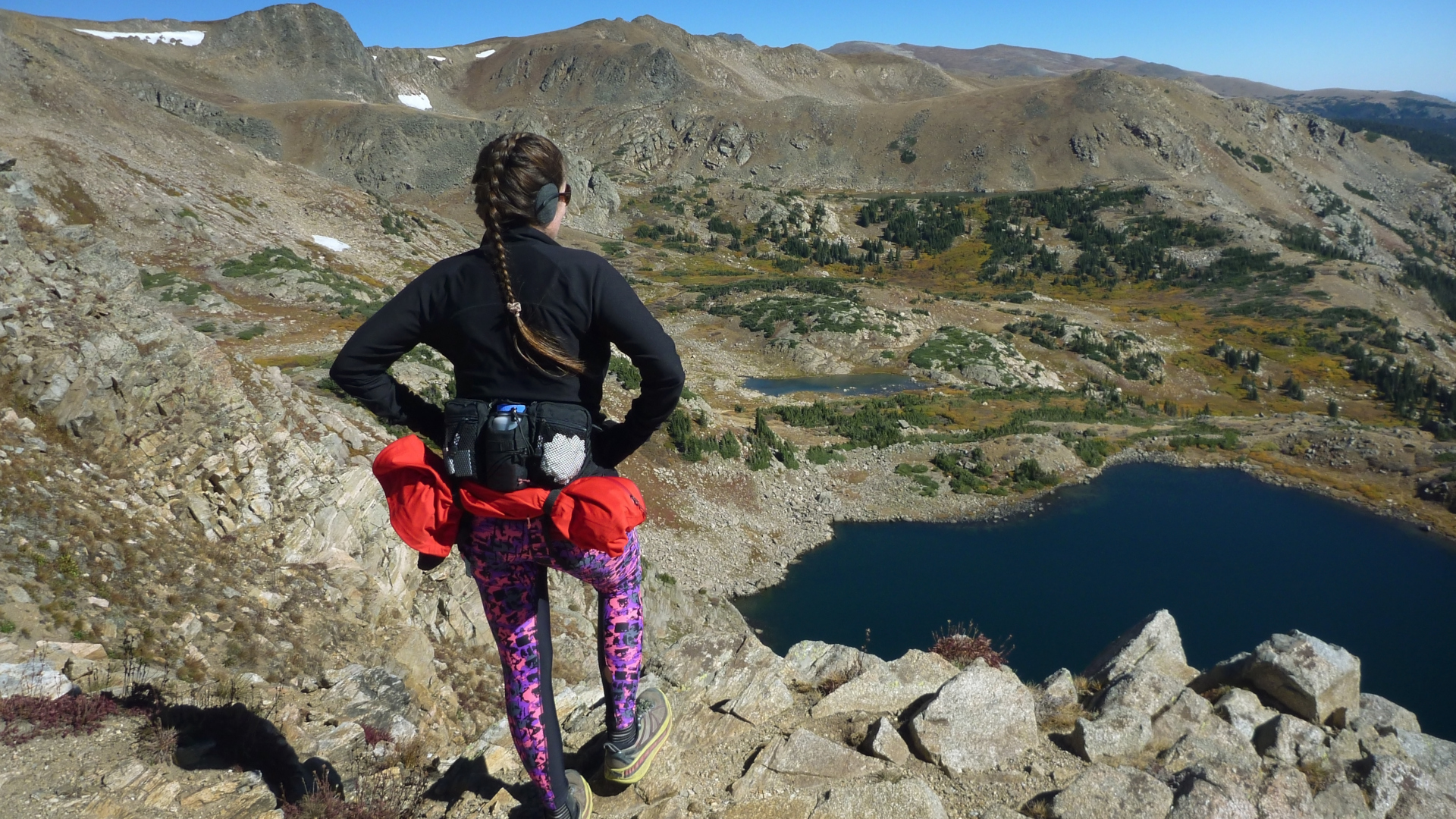
4. Carabiners
If your backpack doesn’t have the right pockets for your favorite water bottle and your water bottle has a lid with a loop on it, you may be able to clip it to the outside of your backpack using a simple carabiner. This obviously saves room inside your backpack, but there are a few downsides.
If you’re clipping the bottle near the bottom or onto the front of your backpack, it will be quite far away from the center and can pull you back a little if it’s heavy. It will also be likely to swing around. However, you could clip it onto the shoulder straps which keeps it closer to your body and to your hands when you want a drink. If your bottle isn’t made of stainless steel, the carabiner may damage it over time and this option might also damage the loops on your backpack. Again, a soft water bottle might make things easier because it will sit more flush to the backpack than a cylindrical one, but may not be strong enough to hold up to hanging for long periods of time.
- Best running backpacks: lightweight and comfortable packs for essentials
Julia Clarke is a staff writer for Advnture.com and the author of the book Restorative Yoga for Beginners. She loves to explore mountains on foot, bike, skis and belay and then recover on the the yoga mat. Julia graduated with a degree in journalism in 2004 and spent eight years working as a radio presenter in Kansas City, Vermont, Boston and New York City before discovering the joys of the Rocky Mountains. She then detoured west to Colorado and enjoyed 11 years teaching yoga in Vail before returning to her hometown of Glasgow, Scotland in 2020 to focus on family and writing.

